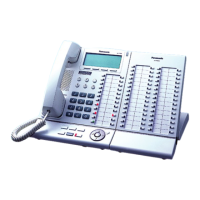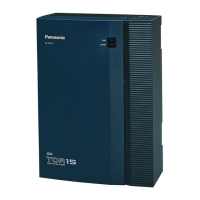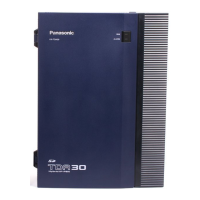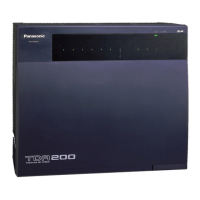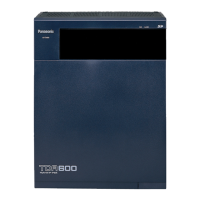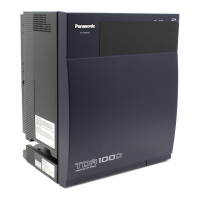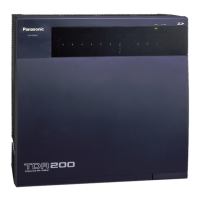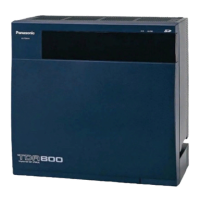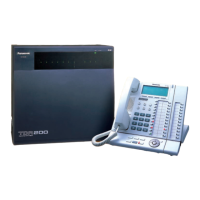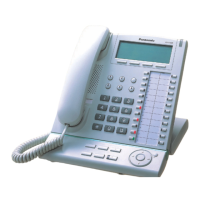1.25 Networking Features
196 Feature Guide
2. PBX-2 checks its Incoming Number Modification Table (not shown here). No modification is
programmed. PBX-2 removes its PBX code (902). The number is now "9-12125551234".
3. PBX-2 recognizes its Idle Line Access number, "9", and sends the remaining number,
"12125551234", to the telephone company using an idle CO line.
Conditions
• When a TIE line call arrives at an extension, it is treated as a CO line call, not as an intercom call. If the
called extension is busy and has disabled Call Waiting, the caller will hear a busy tone or be redirected
to the Intercept Routing—Busy destination, if one is programmed. If the called extension has set Do
Not Disturb (DND), the call will be redirected to the Intercept Routing—DND destination, if one is
programmed. (→ 1.1.1.4 Intercept Routing)
• The amount of time the PBX waits for a digit to be dialed before sending a reorder tone or directing the
call to an operator can be specified through system programming (TIE Receiving Dial Inter-digit time).
• Throughout the examples in this section, the CO Line Group Access number "8" and a CO line group
number ("02", for example) can be dialed instead of the TIE Line Access number "7" if the caller wishes
to select a specific CO line group with which to make a call. Note, however, that if the TIE Line Access
number is not dialed, the PBX will not check the TIE Line Routing and Modification Table for instructions
on how to modify the dialed number before sending it down the TIE line using the specified CO line
group.
Feature Guide References
1.1.1.4 Intercept Routing
1.3.1.2 Call Forwarding (FWD)
1.5.5.3 CO Line Access
1.9.1 Automatic Route Selection (ARS)
1.11.1 Call Transfer
1.15.6 Direct Inward System Access (DISA)
2.3.5 Flexible Numbering/Fixed Numbering
User Manual References
1.2.1 Basic Calling
1.25.1.3 Extension Number Method (Access without PBX Code)
Description
PBXs can be distinguished from each other on a private network by the extension numbers they use. When
a PBX makes or receives a TIE line call that contains an extension number, it can recognize right away if it
should handle the call itself, or pass it on to another PBX. If each extension on a private network has a
unique number, calling extensions in other PBXs can be greatly simplified.
Making or receiving calls via TIE line between PBXs that rely on unique extension numbers to distinguish
themselves is called "Extension Number Method (Access without PBX Code)".

